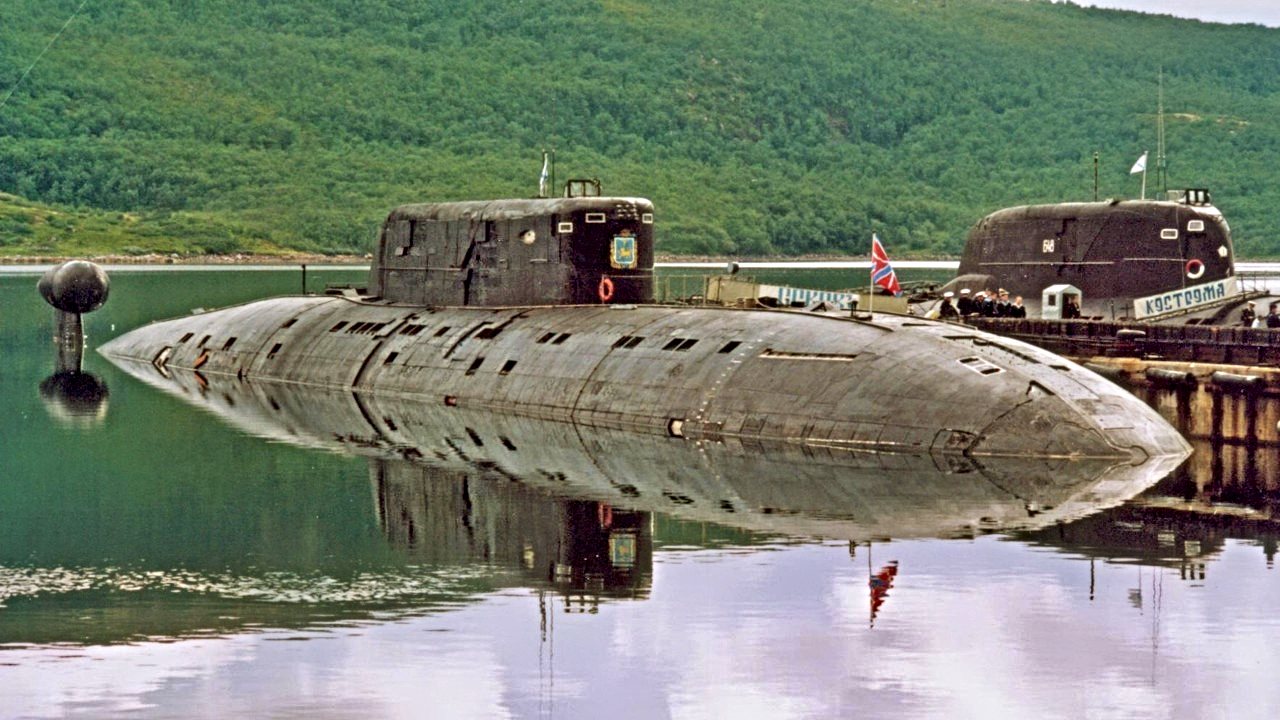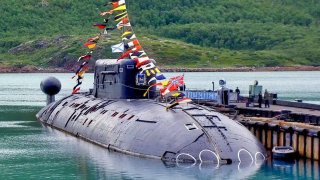Russia's Sierra II-Class: A Titanium Submarine The U.S. Navy Can't Match?
While two Sierra II-Class vessels are still currently in service with the Russian Navy, hardly any information surrounding their whereabouts or capabilities has been reported on.
Russia Sierra II-class submarine explainer: As a product of the Cold War arms race, the Soviet-designed Sierra-class submarines were built to counter its American counterparts in the seas. The race to develop cutting-edge military systems spurred technological innovations that are still marveled upon by engineers and analysts to this day. In fact, the Sierra series of nuclear-powered attack ships still remains a critical component of the Russian Navy.
Titanium Submarines: The history of the Sierra-class:
When the U.S. Navy introduced its formidable Los Angeles and Seawolf-class submarines to service during the Cold War, Soviet engineers got to work to raise the bar in the sea-based warfare realm.
The Soviets first conceptualized the Project 661 “Anchar” nuclear-powered cruise-missile submarine in the 1960’s. As the first USSR submarine to be constructed with a titanium hull, the North Atlantic Treaty Organization-designated (NATO) “Papa-class” was truly one of a kind.
The Soviets’ success in using titanium to build the submarine resulted in the development of the Project 945 Barrakuda and Project 945A Kondor ships. Dubbed Sierra I and Sierra II by NATO, respectively, these submarines also sported titanium hulls.
Titanium is more durable than steel and weighs less, making it a prime submarine material. This metal enables submarines to sail quicker with more agility and more resistance to damage, allowing them to dive to greater depths while minimizing emissions of radiated noise.
Perhaps the only shortcomings of titanium are its high costs and complexity to process. In addition to their titanium designs, the Sierra ships featured another unique element.
The ships in this class were built with a single reactor, a design only previously featured on the Charlie-class cruise missile submarines.
Introducing the Sierra II-Class Submarines:
The first Sierra-class submarine was laid down in 1979 at the Gorky shipyard. Carp was launched four years later after being delivered to Severodvinsk for additional fittings. The Kostroma was the second and last Sierra I ship to be commissioned in 1987.
The first Project 945A Sierra II-class ship, Nizhniy Novgorod, entered service in 1990, followed by Pskov in 1993. The Sierra II submarines were larger than their sister ships and featured a unique flat, square leading edge. Similar to the Sierra Is, the Sierra IIs were powered by one OK-650 pressurized water reactor.
These submarines reportedly sport a range of weapons systems, including P-100 Oniks anti-ship cruise missiles, Type 96R Vodopad and RPK-6 Vodopad anti-ship cruise missiles and Type 40 torpedoes.

While both Sierra II-Class vessels are still currently in service with the Russian Navy, hardly any information surrounding their whereabouts or capabilities have been reported on.
Back in 2019, a report published by Russian state-run media outlet TASS revealed that the two Sierra II ships had performed “planned assignments” in the Barents Sea, where “Torpedo practice fire against surface targets was the most complex and responsible stage of the joint underwater maneuvers. The crews of the Northern Fleet's multipurpose nuclear-powered submarines Nizhny Novgorod and Pskov performed this exercise in the duel version.”
About the Author: Maya Carlin
Maya Carlin, National Security Writer with The National Interest, is an analyst with the Center for Security Policy and a former Anna Sobol Levy Fellow at IDC Herzliya in Israel. She has by-lines in many publications, including The National Interest, Jerusalem Post, and Times of Israel. You can follow her on Twitter: @MayaCarlin.


